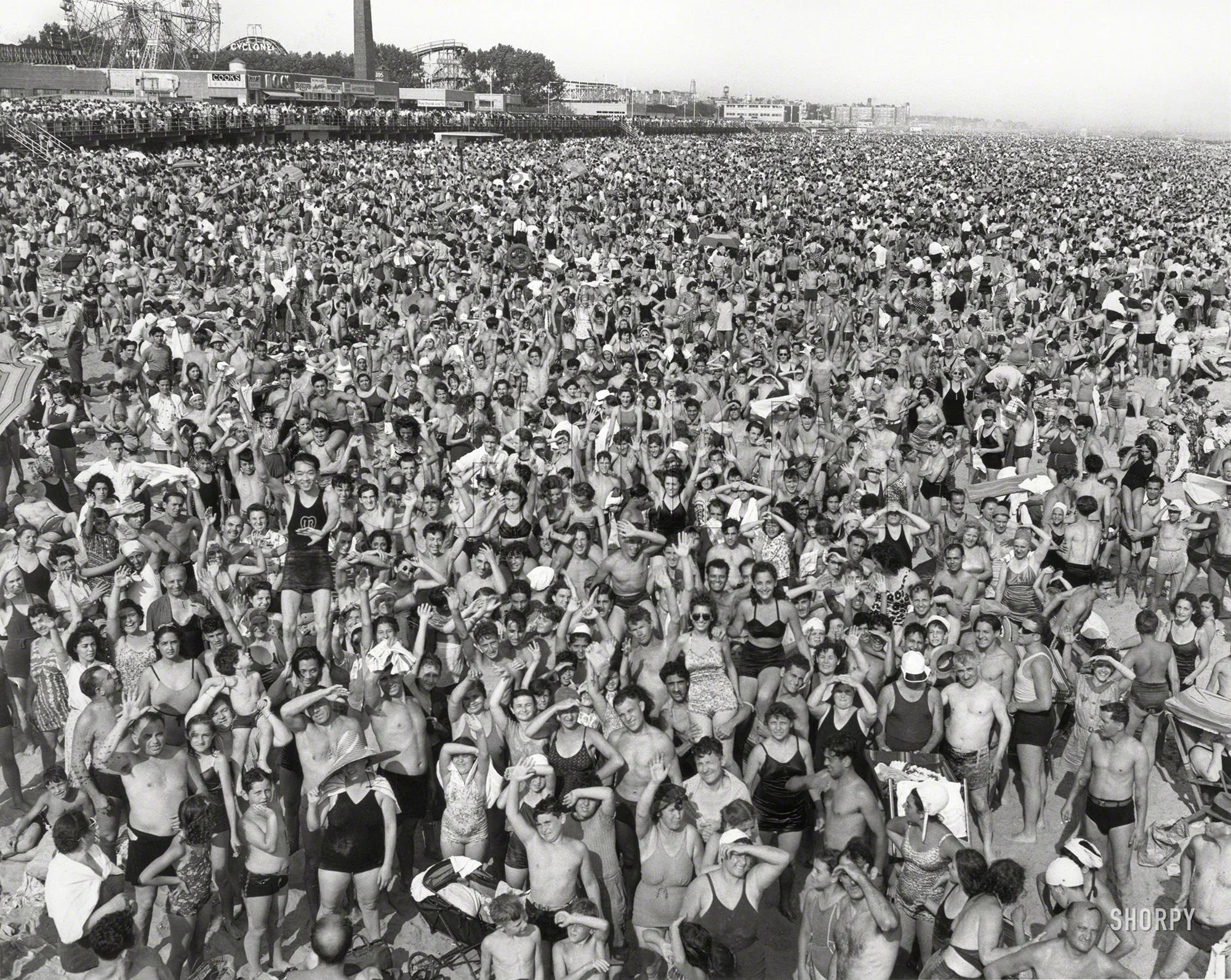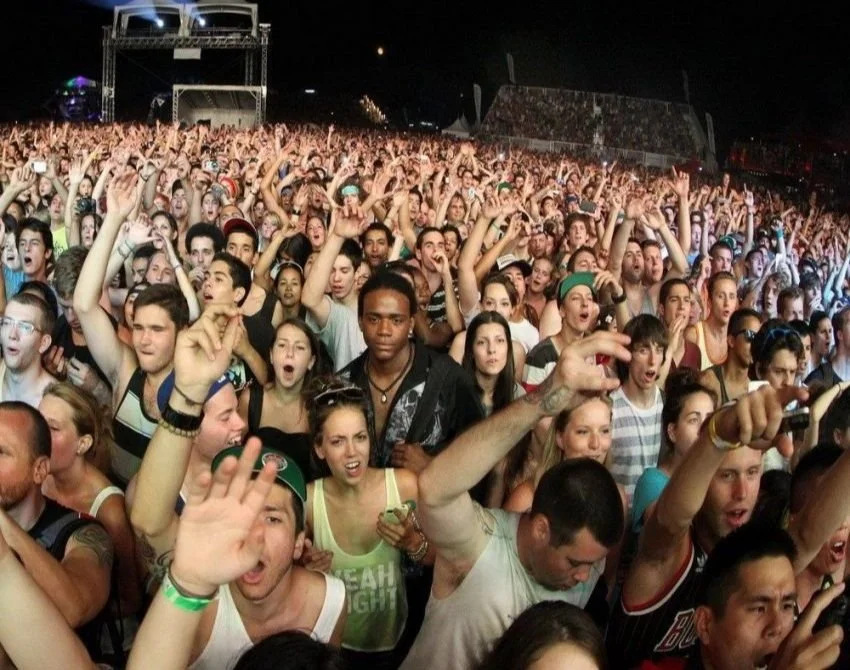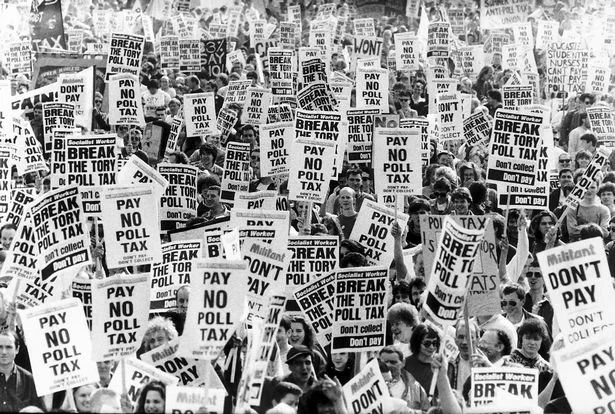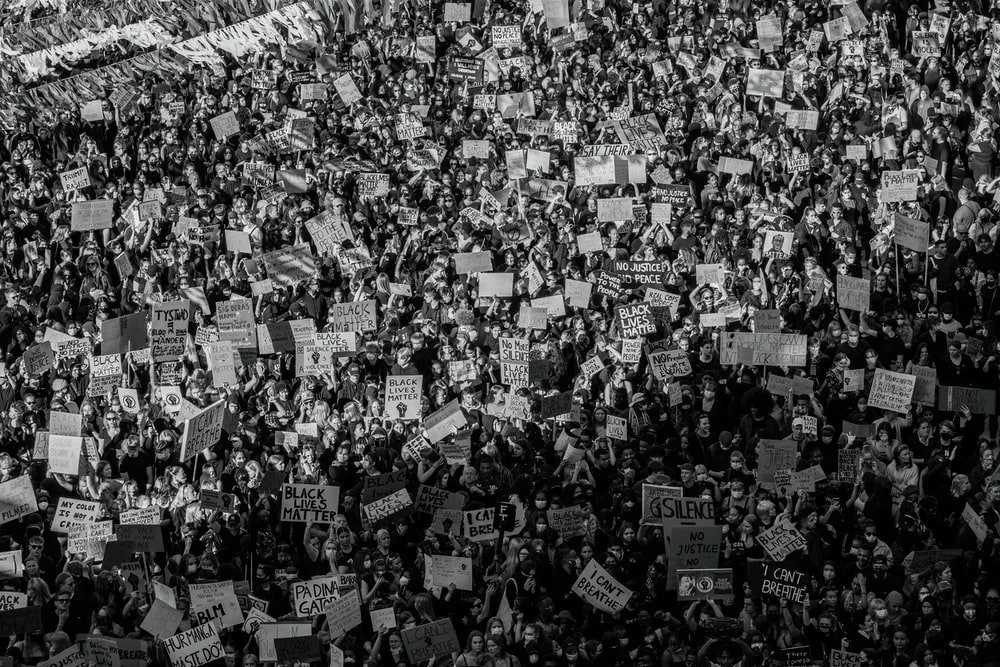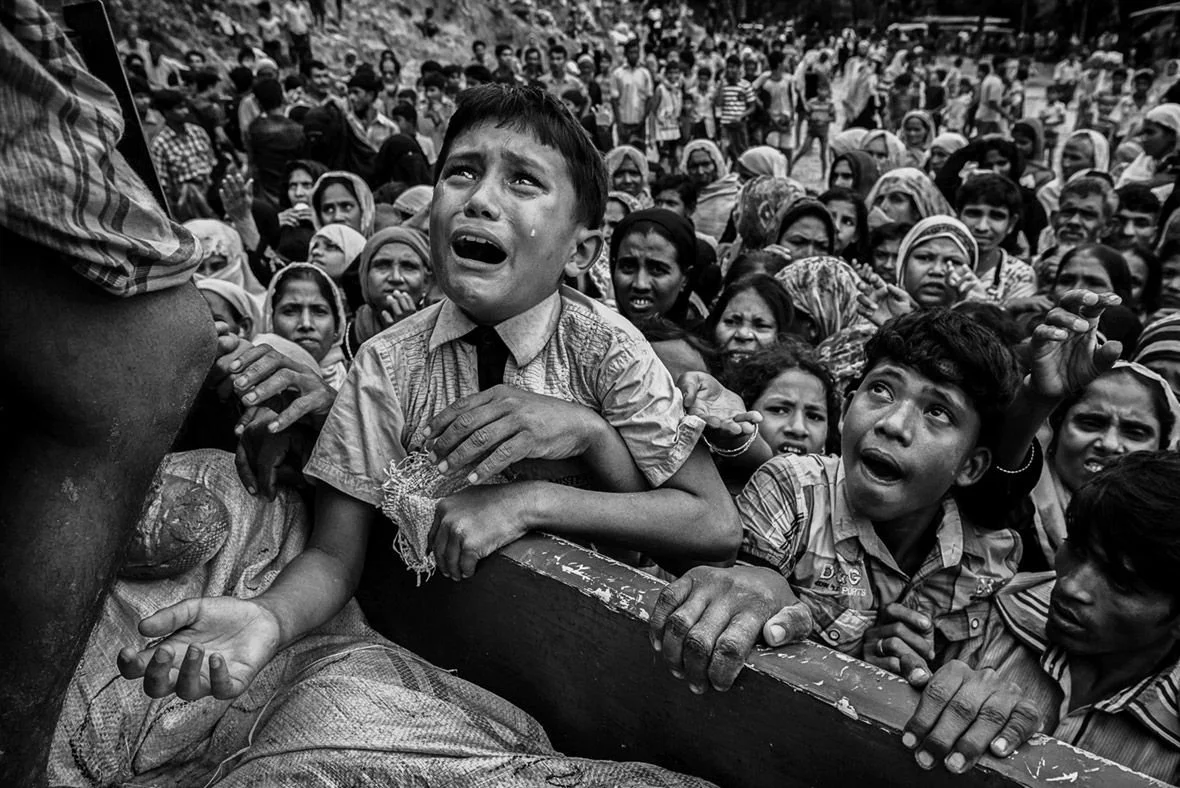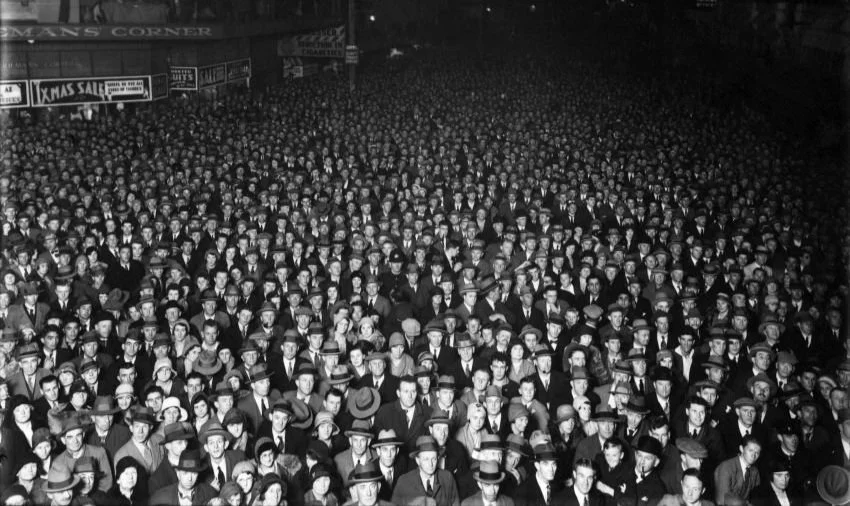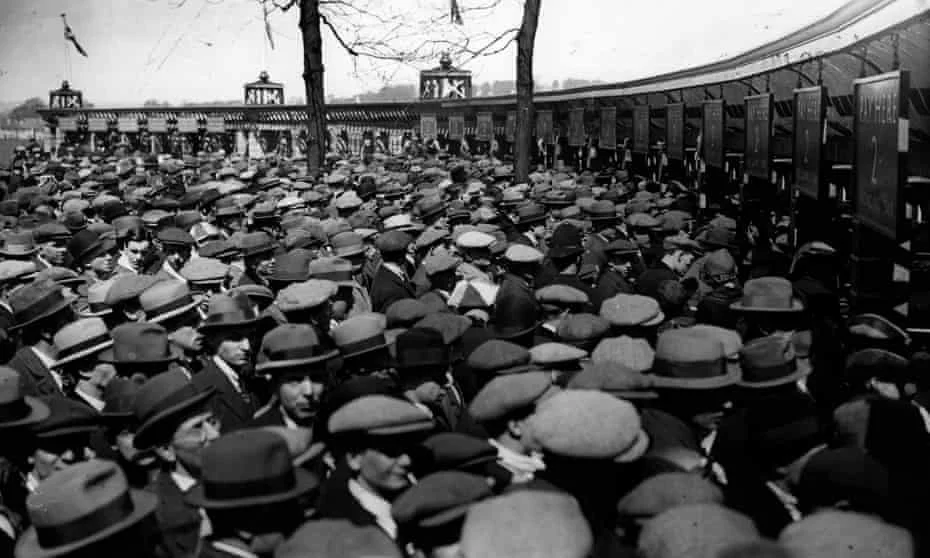By The Landlord
"Ten thousand saw I at a glance,
Tossing their heads in sprightly dance." – William Wordsworth
“The intelligence of that creature known as a crowd is the square root of the number of people in it.” – Terry Pratchett, Jingo
“Wherever I went, I was on the wrong end of the stampede.” – Rachel Cohn, Dash & Lily's Book of Dares
“Never underestimate the power of stupid people in large groups.” – George Carlin
“Men, it has been well said, think in herds; it will be seen that they go mad in herds, while they only recover their senses slowly, one by one.” – Charles MacKay, Extraordinary Popular Delusions and the Madness of Crowds
“I do not like the raw sound of the human voice in unison unless it is under the discipline of music.” – Flannery O'Connor, The Habit of Being: Letters of Flannery O'Connor
“The nice thing about crowds is that someone can throw a bottle and you don't take it personally.” – David Sedaris, Theft by Finding
Gather!
Just when it was beginning to be safe to form, follow or join one again, has the whole idea of the throng once more gone infectiously wrong? Before Covid-19, and no doubt long afterwards, crowds have always been part of human life, and right now, we are perhaps more than ever conscious of them. Most of us are variously part-time herders, sometime lone-wolves or small-pack animals, as and when it suits us, seeking to join or avoid, but getting together in larger crowds is profound experience that can bring anything from collective joy and shared experience to the crazed, anarchic, violent or panic-ridden, crushing stampede.
More on that in a minute, but how many people does it take to make a crowd? Perhaps that depends on the circumstances. It is rarely ever just three, unless perhaps you’re in a romantic gooseberry situation, or a small number of people trying to cram into a phone box after eating a particularly punishing flatulently pungent curry.
One dictionary definition of a crowd is "a large number of people gathered closely in a disorganised or unruly way", but there’s always nuance within a crowd, in which individuals can behave well or badly have something or nothing in common, be organised or randomly gathered. The verb 'to crowd' means to press or push each other but of course all of that is open to interpretation. Naturally then, the crowd has a broad definition, and there are many types, but this week the always pleasing crowd of Song Bar regulars, perhaps surging at the beginning, almost certainly surfing, and mutually giving each other a gentle and mutually appreciative push, can form a joyous unruly collective wisdom, our very own brand of musical and lyrical crowdsourcing.
So songs that qualify would focus primarily or prominently on crowds in title or lyrics, and perhaps some might even include noises of crowds to add to the effect. Of course the word itself is s good starting point, but there are many synonyms, from mass to mob to throng to audience, swarm to horde and more. Perhaps, if they are crowd-worthy, some unusual collective pronouns might come into play.
But at what point, for example is a 'bike' of bees (from Old English for swarm) a crowd, or simply an organised group doing their collective conscious thing together? Perhaps a swarm of locusts, but what about a troop or monkeys, a mess of iguanas, a rhumba or rattlesnakes, a gang of elks, a huddle of walruses, a bed of clams, a crash of rhinoceroses, or a horde of hamsters? Or is that just a crowd of alliteration?
And how about a murmuration of starlings? Or indeed a flamboyance of flamingos? What is happening with these creatures? Is this a collection of individuals with a purpose, each following a neighbour, or a huge collective consciousness almost moving as one organism? Whether it is flocking for migration or a display gathering to find a mate, they are still a crowd, and examples of some of the most beautiful crowd sights on our planet:
That line from William Wordsworth's famous poem certainly these prancing birds. I Wandered Lonely as a Cloud was actually inspired when he was actually, not alone, but on a walk with his sister Dorothy on 15 April 1802 by Grasmere in the Lake District, and when William later read her journal. He describes how:
"... all at once I saw a crowd,
A host of golden daffodils;
Beside the lake, beneath the trees,
Fluttering and dancing in the breeze.
Continuous as the stars that shine
and twinkle on the Milky Way,
They stretched in never-ending line
along the margin of a bay …"
Wordsworth also shifts his descriptions between host to crowd. How many does a crowd make, then? Ten thousand? Usually a crowd, I’d say, is a number bigger than you're able to count or estimate in a glance, unless you have some sort of Rain Man talent, and also because most crowds are on the move, but let's give him poetic licence for those dancing yellow daffs.
Talking of dancing, one form of crowd is that which many of us might see hopefully more of at present, or in the future, is at a live music event, or a festival. The behaviour of the crowd makes for fascinating study. This footage, taken from the Sasquatch Music Festival in 2009 - was later made into a TED talk on the subject of 'leadership', but it shows how one enthused dancer can start a spontaneous crowd, suddenly reaching a tipping point from eccentric individual mover to a couple curious bystanders or friends to an in-crowd of no-risk embarrassment to a mass gathering of unadulterated joy. It’s a snapshot of how history can gather pace.
Concert and festival crowds form a collective type of behaviour, sometimes generally acceptable but not always welcome (talking during the gig/hands in the air in someone else’s face) but of course as all crowds, there are individuals, such as the man in the middle here, who don't always feel the need to respond just like everyone else:
Sociologists and other writers have long studied the dynamics of crowd behaviour. For many it is thought that when individuals gather in crowds, the lowest common denominator takes over. Here at the Bar this week, there’s a small crowd who agree on such things.
“The Mob has many heads but no Brains,” announces Thomas Fuller, the 17th-century English physician.
“Yes,” says that rat experimentalist and slightly dubious studier of race, BF Skinner. “The mob rushes in where individuals fear to tread.”
Gustave Le Bon’s highly influential book, The Crowd A Study of the Popular Mind, very much set a trend when describing the dangers of the mass crowd: “So far as the majority of their acts are considered, crowds display a singularly inferior mentality; yet there are other acts in which they appear to be guided by those mysterious forces which the ancients denominated destiny, nature, or providence, which we call the voices of the dead, and whose power it is impossible to overlook, although we ignore their essence. It would seem, at times, as if there were latent forces in the inner being of nations which serve to guide them.”
And here’s Song Bar regular, Carl Jung, with The Archetypes and the Collective Unconscious: “A group experience takes place on a lower level of consciousness than the experience of an individual. This is due to the fact that, when many people gather together to share one common emotion, the total psyche emerging from the group is below the level of the individual psyche. If it is a very large group, the collective psyche will be more like the psyche of an animal, which is the reason why the ethical attitude of large organisations is always doubtful. The psychology of a large crowd inevitably sinks to the level of mob psychology. If, therefore, I have a so-called collective experience as a member of a group, it takes place on a lower level of consciousness than if I had the experience by myself alone.”
Another key figure on the subject, Elias Canetti, is here with a copy of his book Crowds and Power in hand, and tells us: “The crowd is the same everywhere, in all periods and cultures; it remains essentially the same among men of the most diverse origin, education and language. Once in being, it spreads with the utmost violence. Few can resist its contagion; it always wants to go on growing and there are no inherent limits to its growth. It can arise wherever people are together, and its spontaneity and suddenness are uncanny.”
“Assembled in a crowd, people lose their powers of reasoning and their capacity for moral choice,” adds the visionary writer Aldous Huxley.
And here’s Jean Cocteau, putting it in a religious example: “If it has to choose who is to be crucified, the crowd will always save Barabbas.”
Certainly then, crowds en masse can behave stupidly, and elements within them can be influential and disruptive. Perhaps because in a crowd our adrenalin levels are higher and our flight or fight mechanisms are naturally ready to be triggered. But there are many types of crowds to consider for this topic. Some are just casual, randomly gathered in the street, such as masses of commuters, with no common purpose. Some are collective together to see a music or sports event and are expressive.
Music crowd: not everyone behaves identically …
Perhaps crowd surfing is the ultimate expression of joyful abandonment at a gig, though those around you may not always have fun with it. That is unless you’re wannabe rock-star Jack Black at the always enjoyable film School of Rock, still under his fantasy before become a pretend teacher:
And there are not just the dangerous, riotous kind, but those who might be marching for a worthy cause, some of whom then get triggered into more extreme behaviour by provocation. I was a young demonstrator at the peaceful ant-poll tax march in London in 1990, which ultimately brought down Margaret Thatcher. It only turned into a violent debacle, during which I was a passive witness, due to the over-reaction of police, who charged into the crowd with horses and riot vans, and a few violent individuals who fought back. What a day though. Anyone else have memories of it?
The poll tax riot of 1990, significant as it was at the time, is a small event compared to the many mass gatherings of demonstration around the world, from civil right America to the Middle East Arab spring to Tiananmen Square, anti-apartheid gatherings in South Africa, to those that led to Indian independence and more. It is crowds that change history, the sheer numbers changing our collective consciousness. Crowds are uplifting but also a threat. As Martin Luther King put it:
“A riot is the language of the unheard. And what is it America has failed to hear? ... It has failed to hear that the promises of freedom and justice have not been met. And it has failed to hear that large segments of white society are more concerned about tranquility and the status quo than about justice and humanity.”
The struggle continues, whether or not they are protest gatherings or what is perceived as a riot. And then injustice occurs, then of course things get out of hand, but as Darnell Lamont Walker puts it: “America. Where property damage is a greater offence than genocide.”
No matter how portraye is clearly a difference between crowd with a peaceful organised demonstration (Black Lives Matter, various) and a mob (White House invasion 6 January 2021). But there are also crowds where there is not energy, or enjoyment, or anger, but simply suffering and hunger as seen in hundreds of thousands who have fled places from Syria to Myanmar, such as these children in Bangladesh. A big crowd, but each face tells a story:
And then there are crowds that are simply brought about by madness - mass cravings for goods, or rushes to buy anything from the Dutch tulip bulb mania of 1634 and 1637 to the craze for the Cabbage Patch Doll in mid-1980s to the overnight queues for Christmas sales or the latest Apple products of today. Perhaps today crowds come in different forms - the ones on line who rush to buy stuff, such as tickets, as soon as the website launches. But crowds come in all forms, telling the stories of history that can’t be captured in books. Here are a couple more more to help inspired your songs:
And finally, of course some songs about crowds have found their way into other, older topics, such as this belter by Dobie Gray for ‘style and glamour’, but it could still qualify for the B-crowd playlist:
So then, it’s time to turn this hopefully crowd-pleasing introduction to this week’s guest playlist who will conduct the collective orchestra of nominations, the fabulous Loud Atlas! Place your songs in comments below in time for deadline at 11pm UK time on Monday for playlists published next week. Throngs of songs …
New to comment? It is quick and easy. You just need to login to Disqus once. All is explained in About/FAQs ...
Fancy a turn behind the pumps at The Song Bar? Care to choose a playlist from songs nominated and write something about it? Then feel free to contact The Song Bar here, or try the usual email address. Also please follow us social media: Song Bar Twitter, Song Bar Facebook. Song Bar YouTube, and Song Bar Instagram. Please subscribe, follow and share.
Song Bar is non-profit and is simply about sharing great music. We don’t do clickbait or advertisements. Please make any donation to help keep the Bar running:

